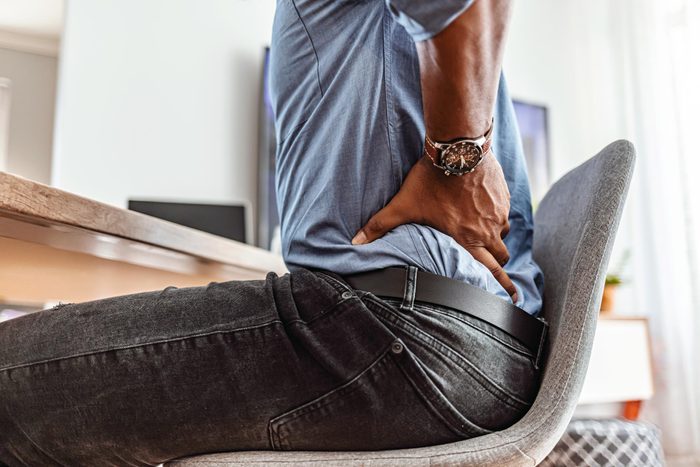
Back pain is one of the most common reasons for people to seek medical care—either in a primary care or emergency setting. One 2022 report from a team or orthopedic physicians suggested that “an estimated 200 billion dollars are spent annually on the management of back pain.” Back pain can be mechanical, degenerative, inflammatory, oncologic or infectious, and studies estimate that 23% of the adult population worldwide suffers from chronic low back pain.
If you know, you know: when you have back pain, all you want is for it to feel better as quickly as possible. But Kelly Kessler, DPT—a doctor of physical therapy and certified strength and conditioning specialist—warns that pushing it won’t help in the long run. “Whenever you have back pain, it is important to listen to your body and move through a range that is tolerable for you,” Dr. Kessler says. “Additionally, using your breath in combination with movement is a great way to decrease tension and allow your body to shift into a more relaxed state, because stress accompanies back pain as both a contributor and a result of the pain.”
Here, the pros share with The Healthy @Reader’s Digest seven gentle exercises for lower back pain.
What Are the Heart-Healthiest Foods? A Cardiologist Just Opened Her Fridge
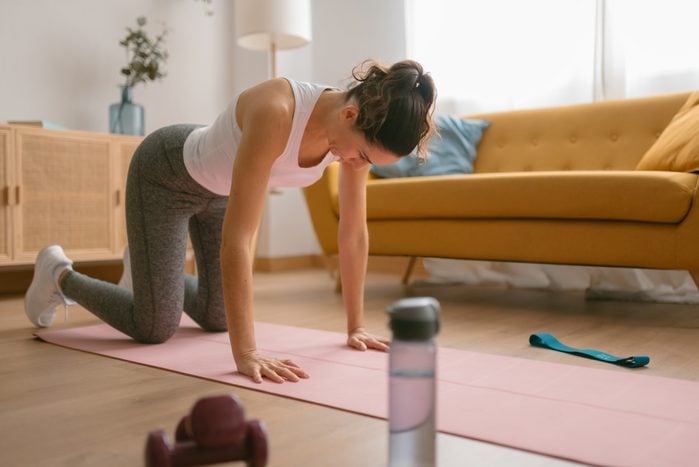
Cat cow
When spinal joints are enflamed, increasing motion without weight-bearing helps bring nutrition to the joint and increases flexibility. “Kneel on a soft carpet or mat, placing hands on the floor about shoulder-width apart under your chest and your knees directly below your hips,” instructs Dr. Kevin Lees, D.C., director of chiropractic operations at The Joint Chiropractic in Scottsdale, AZ. “Arch your back downward, pushing your stomach toward the floor while taking a deep breath. When you exhale, bring your abdomen in, pushing your back to the ceiling and bringing your head and pelvis down.”
This can be repeated several times, two to three minutes at a time.
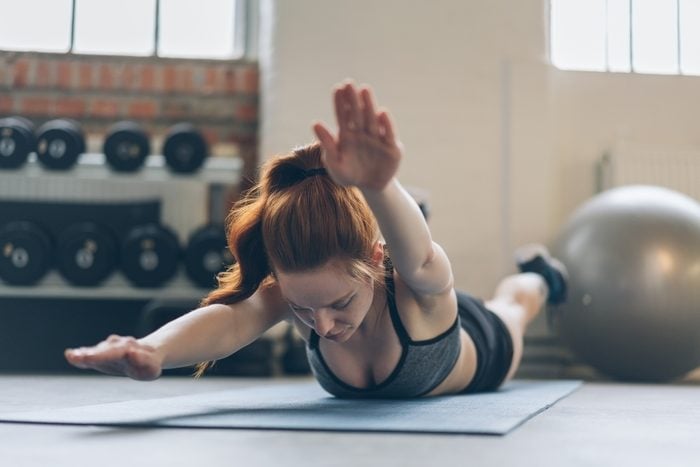
Superman
Long days at the desk has led to a culture with weak abdominal muscles, and Dr. Lees recommends strengthening and toning core muscles to support your back. “Start on your hands and knees on a soft carpet or exercise mat and tighten your stomach muscles,” Dr. Lees says. “Extend one leg behind you while lifting and extending the opposite arm.”
You can hold this position for five seconds, then switch sides while keeping your back flat. Repeat five to 10 times.
The 5 Best Standing Desks to Keep You from Sitting All Day Long
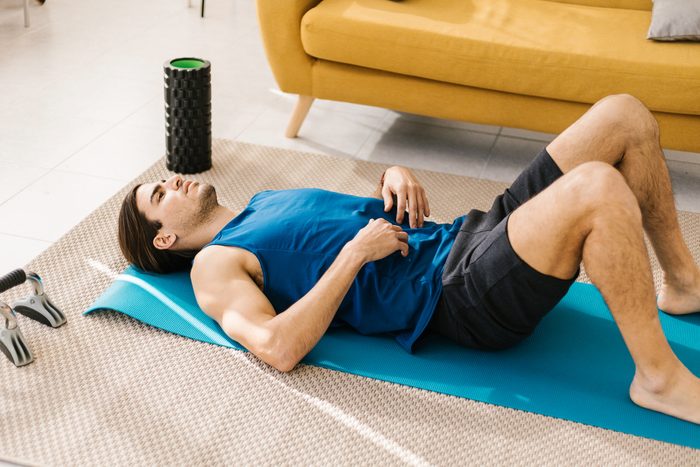
Pelvic tilts
Strengthening your abdominal muscles may help relieve pain and tightness in the lower back. This also benefits the glutes and hamstrings, which can reduce lower back pressure. “Start by lying on your back with both knees bent, and your feet should rest flat on the floor,” Dr. Lees says. “Tighten your stomach muscles and push your back against the floor, rotating your pelvis upward. Hold this position for 10 seconds, and then relax.”
Even though you may want to hold your breath, you should breathe normally while doing pelvic tilts. Start with three to five repetitions.
Want to Stop Stress? A New Study Found This Solution Was More Powerful Than Meditation
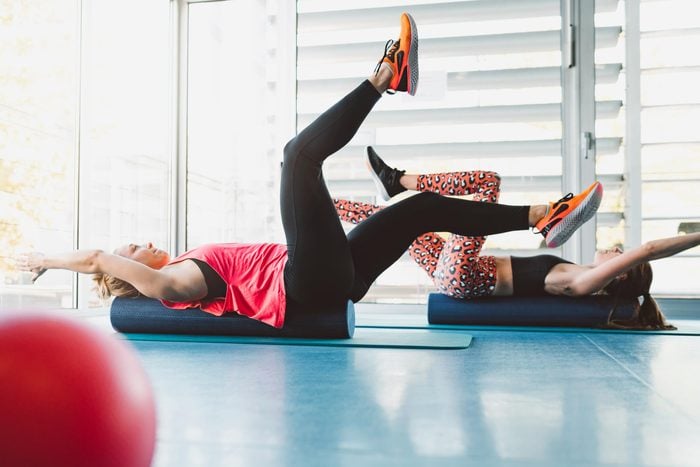
Dead Bugs
Dead bugs are one of the most relaxed ways to engage the core, which in turn supports the spine and helps tight back muscles relax. Doctor of physical therapy Camille Ronesi, PT, DPT, FMS2, also notes that dead bugs are easy to modify, meaning you can continue to make this exercise harder as your back feels better.
The basic setup is to lie on your back on a firm surface, head on the floor, knees bent with feet flat on the floor. “Take a folded dishcloth and place it underneath the curve of your low back.,” Dr. Ronesi says. “Gently roll your pelvis down, feeling your low back press into the dishcloth. The goal is to keep the same amount of pressure on the dishcloth, no matter what.”
“For level one, lift your right knee to 90 degrees on an exhale, hold for a few seconds, and then return your foot to the floor,” Dr. Ronesi explains. “For level two, you bring your second knee up to match the first and then alternate your feet touching the floor.”
For level three, you lift the opposite side arm to the ceiling, and for level four, start straightening your legs. “But if you can’t keep pressure on the dishcloth,” Dr. Ronesi says, “return to the level at which you can.”
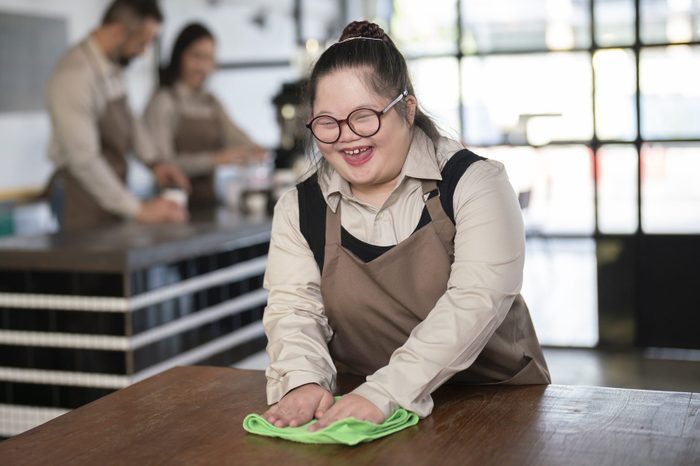
Table slides
For this exercise, sit at a table with both your hands on a towel on the surface of the table. “Take a deep inhale, and as you exhale, slowly glide your hands on the towel away from you so that you go into a gentle forward fold of your trunk,” explains Dr. Kessler. “Hold this position for five to ten seconds, and then return to sitting upright.”
You can repeat this 10 to 15 times, while focusing on moving slowly and with the rhythm of your breath.
4 Gentle Mobility Exercises a Trainer Says You Should Be Doing
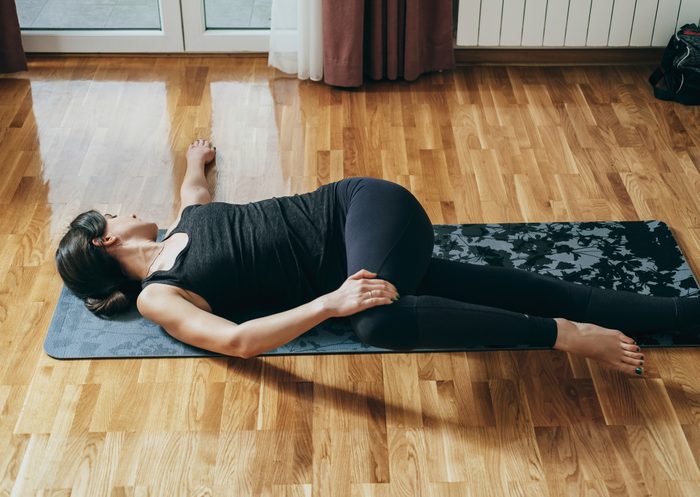
Lower trunk rotations
For this exercise, start on your back with your knees bent. Place one hand on your chest and the other on your belly. “Inhale and focus on making your belly rise,” Dr. Kessler says. “Gently rock both knees to one side within a tolerable range. Hold for one to two seconds, then return to the center as you slowly exhale.”
Sway your legs to the other side and repeat this in a gentle, rhythmic manner for a few minutes.
The 5 Best Yoga Poses for a Healthier Gut, from a Registered Yoga Teacher
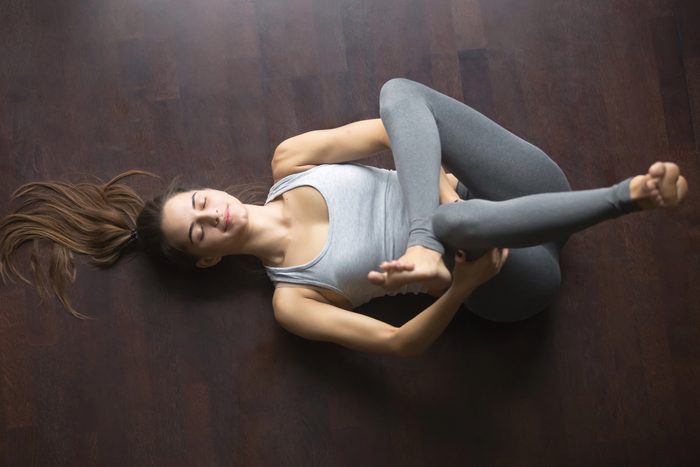
Piriformis stretch
Some people call this the figure-4 stretch, since that’s the shape you make with your legs. “Lie on your back, cross one ankle over the opposite knee, and gently pull the knee towards the opposite shoulder,” says Rob Wagener, CPT, an NASM-certified personal trainer. “Hold for 15 to 30 seconds.”
This stretch targets your piriformis and gluteal muscles and can help with lower back pain. This is a good one to incorporate into your daily life, whether your back hurts or not.
The Healthy @Reader’s Digest Medical Review Board co-chair Latoya Julce RN, BSN also recommends foam rolling. “Not only is it an immediate fascia release, it also works your core in order to roll the lower and upper back,” she says. “It can help relieve muscle tightness, soreness, and inflammation, and increase your joint range of motion.” Julce says to keep “flexible, stress-free, and avoid injuries,” you should try to foam roll on a daily basis for five to 20 minutes—”But even a few times a week will make a big difference!”

